Red or White Oak Flooring – Which Is Better?
December 11, 2024 | By Bruce Product Expert
Oak flooring is a staple when choosing wood flooring. It continues to be the most popular hardwood flooring option in the United States. The flooring is durable and long-lasting, so you can install it with the knowledge it will last you a lifetime.
The U.S. is home to 90 different oak species. However, white and red oak are typically used for flooring. They’re readily available as solid wood flooring or engineered hardwood. Even though each qualifies as oak flooring, they offer stark contrasts to each other with everything from grain color to hardness.
So, which is better, red oak or white oak flooring?
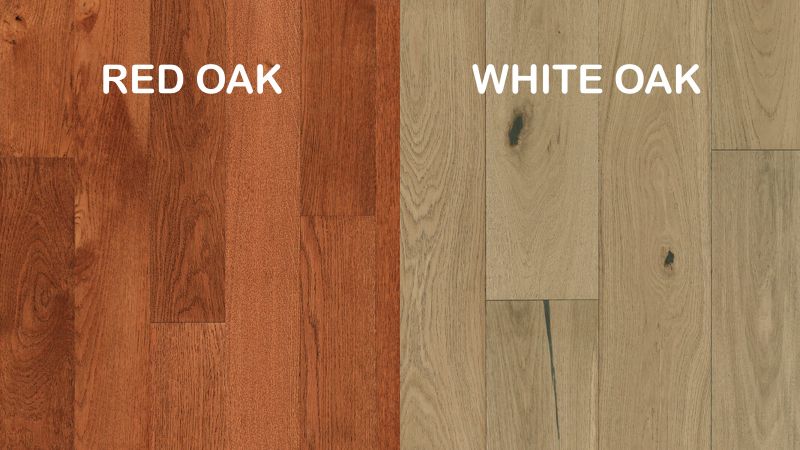
What’s the Difference Between White Oak and Red Oak?
White and red oak are hardwood species commonly used for various applications, including furniture, cabinetry, and flooring. While they share some similarities, they also have distinct differences. The chart below summarizes the key differences between the two.
Color
White oak is pale, featuring a light brown to tan coloration. Conversely, as the name suggests, red oak is pinkish-red to reddish-brown. As a result, red oak is warmer on the color scale. So, depending on your color palette, there may be a clear winner.
Grain Pattern
White oak has a straight, consistent grain pattern, which is more subtle and simple than that of red oak. Additionally, white oak is closed-grain, making it nearly impervious to water.
For example, did you know boatbuilders used white oak to craft vessels? Its durability and rot resistance were ideal for shipbuilding in the 18th century. The USS Constitution was made from white oak.
Red oak’s grain is more dramatic and pronounced than white, with waves and small brown streaks called rays. Equally important, its open grain makes it more porous and less water resistant.
Hardness
White oak is slightly harder than red oak, as measured by the Janka hardness. It measures a wood species’ ability to resist denting.
White oak has a 1360 rating versus red oak at 1290. Its added hardness makes it more resistant to dents and wear, making it a slightly preferred choice for high-traffic areas. White oak is also denser than red oak, contributing to its toughness as a flooring material.
Their difference is so slight that it has little impact on whether you choose red oak or white oak flooring.
How to Tell White Oak from Red Oak Flooring
As you can imagine, the flooring reflects the differences between red and white oak trees. Here’s how you can tell the difference between red and white oak flooring.
The floor’s color is one obvious indicator. White oak flooring has beige and brown tones, darker than red oak. With red oak flooring, you’ll see salmon and pink undertones.
Stain colors can accentuate or muffle those tones. For example, a lighter stain makes the red oak’s pink undertone more evident. If a pink hue doesn’t fit your design palette, consider that. You’ll likely see little difference in the wood’s color with darker stains.
Check the Floors Grain Pattern
Graining provides another distinguishing feature between these two types of hardwood. Red oak flooring features a pronounced wider grain with waves and variations. They add a layer of complexity to the flooring.
The pronounced grain of red oak is a plus for hiding blemishes, something to consider if you have an active household.
White oak solid hardwood floors and engineered wood flooring have a simple, narrow, and tight grain. It delivers a simple, elongated look. White oak’s longer rays impart additional length to the planks.
Although both options are versatile, white fits virtually any home style. Its clean grain works perfectly in an old farmhouse or contemporary home. On the other hand, red oak floors have a more prominent grain with rich tones that work beautifully in traditional home designs.
Look at the End Grain
Another way to distinguish between red oak and white is the end grain. White oak has a closed grain, so it has plugs (tyloses), making it nonporous. This makes white oak suitable for boats or other uses requiring water resistance.
On the other hand, red oak has an open grain, so tiny holes can be seen in the wood. This makes the wood porous and less suitable for moist conditions.
Cost of White Oak vs. Red Oak Flooring
White oak flourishes in the Eastern part of the country, though less abundantly than red oak. Red oak trees typically grow throughout the northeastern U.S. and southeastern Canada.
Because red oak is more prominent, you’ll typically pay less for red oak than white when installing hardwood floors. That extends to other types of flooring as well. With red oak in abundant supplies, it’s less costly than many other flooring options like hickory or maple.
White oak also costs slightly more because of demand. This strong hardwood has many uses besides flooring, such as paneling, decking, pallets, and boats.
Generally, you’ll pay even less if you select engineered hardwood flooring instead of solid wood flooring. The former requires less hardwood to manufacture, making it somewhat less costly.
Sustainability of Red and White Oak Flooring
Because both hardwoods are prominent in the eastern and northeastern U.S., they’re a more sustainable flooring option. Each has a low carbon footprint compared to flooring options like bamboo or other imported hardwoods.
Imported hardwoods put a more significant strain on the environment.
First, they require transportation, adding to emissions. Second, foreign countries place fewer, if any, restrictions on the responsible harvesting of trees.
In the United States, organizations like the Forest Stewardship Council (FSC) ensure responsible harvesting of trees. They work to avoid deforestation and promote sustainability.
Red or White Oak Flooring? Bruce® Has You Covered.
Red or white oak flooring are both popular choices. Which you prefer primarily comes down to aesthetics. Red oak offers a more prominent grain pattern with reddish-brown hues, while white oak has a more simplistic grain pattern and rich brown tone.
Whatever your preference, Bruce® has been America’s choice for wood flooring for generations. You can choose from oak flooring options in solid or engineered hardwood. You can also select from different looks, like wire-brushed, hand-scraped, or traditional.
If you’re undecided, use our flooring visualizer to see each in your room. You can take a picture of your room, select a floor, and instantly view it.
When you’re ready to buy, use our store locator to find the Bruce flooring dealer nearest you.

Ready to shop for oak hardwood flooring near you?
Use our retail locator to find where you can buy Bruce oak flooring.
Find a Store
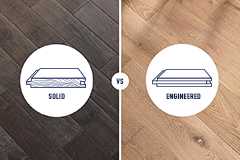 Solid vs Engineered Hardwood Flooring
Solid vs Engineered Hardwood Flooring Guide To Choosing a Hardwood Floor
Guide To Choosing a Hardwood Floor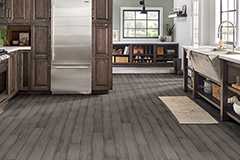 Hardwood Flooring Room Inspiration Guide
Hardwood Flooring Room Inspiration Guide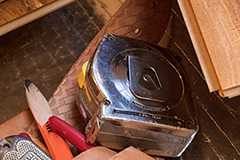 10 Things to Know About Hardwood Floor Installation
10 Things to Know About Hardwood Floor Installation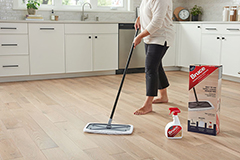 How To Clean and Protect Hardwood Flooring
How To Clean and Protect Hardwood Flooring